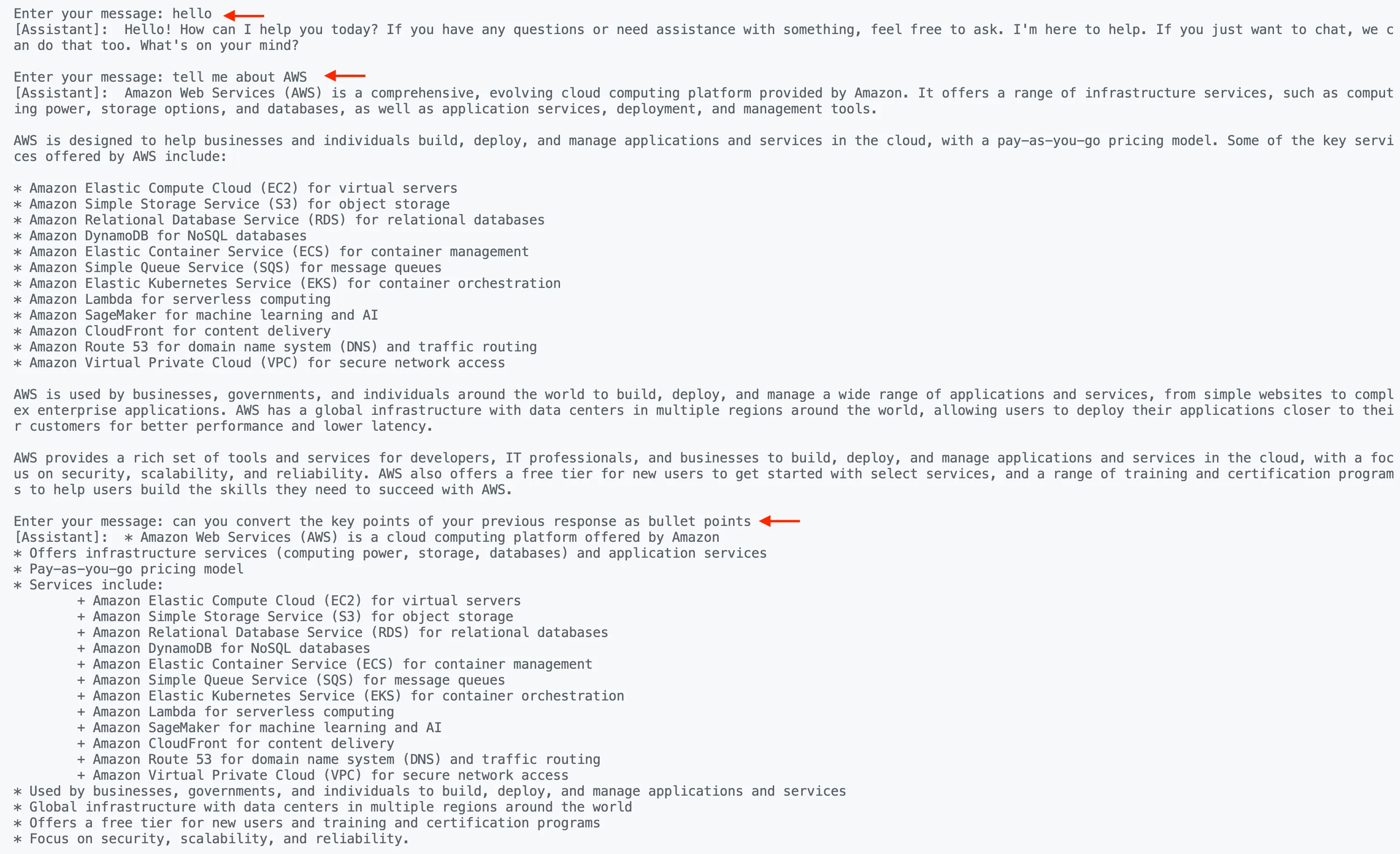Use Mistral AI to build generative AI applications with Go
Learn how to use Mistral AI on Amazon Bedrock with AWS SDK for Go
- Mistral 7B - The first dense model released by Mistral AI, perfect for experimentation, customization, and quick iteration.
- Mixtral 8x7B - A sparse mixture of experts model.
- Mistral Large - ideal for complex tasks that require large reasoning capabilities or are highly specialized (Synthetic Text Generation, Code Generation, RAG, or Agents).
1
2
3
4
git clone https://github.com/abhirockzz/mistral-bedrock-go
cd mistral-bedrock-go
go run basic/main.go1
2
3
4
5
6
request payload:
{"prompt":"\u003cs\u003e[INST] Hello, what's your name? [/INST]"}
response payload:
{"outputs":[{"text":" Hello! I don't have a name. I'm just an artificial intelligence designed to help answer questions and provide information. How can I assist you today?","stop_reason":"stop"}]}
response string:
Hello! I don't have a name. I'm just an artificial intelligence designed to help answer questions and provide information. How can I assist you today?struct (MistralRequest). Also, notice the model ID mistral.mistral-7b-instruct-v0:21
2
3
4
5
6
7
8
9
10
const modelID7BInstruct = "mistral.mistral-7b-instruct-v0:2"
const promptFormat = "<s>[INST] %s [/INST]"
func main() {
msg := "Hello, what's your name?"
payload := MistralRequest{
Prompt: fmt.Sprintf(promptFormat, msg),
}
//...
}<s>refers to the beginning of string token- text for the user role is inside the
[INST]...[/INST]tokens - text outside is the assistant role
<s> token is interpretedMistralRequest struct with the attributes:1
2
3
4
5
6
7
8
type MistralRequest struct {
Prompt string `json:"prompt"`
MaxTokens int `json:"max_tokens,omitempty"`
Temperature float64 `json:"temperature,omitempty"`
TopP float64 `json:"top_p,omitempty"`
TopK int `json:"top_k,omitempty"`
StopSequences []string `json:"stop,omitempty"`
}MistralResponse) and the text response is extracted from it.1
2
3
4
5
6
7
8
output, err := brc.InvokeModel(context.Background(), &bedrockruntime.InvokeModelInput{
Body: payloadBytes,
ModelId: aws.String(modelID7BInstruct),
ContentType: aws.String("application/json"),
})
``var resp MistralResponse
err = json.Unmarshal(output.Body, &resp)
fmt.Println("response string:\n", resp.Outputs[0].Text)</s> which is the end of string token.1
go run chat/main.go
mistral.mixtral-8x7b-instruct-v0:1) in this example.1
2
3
4
5
6
7
8
9
10
11
12
13
14
15
16
17
18
19
20
21
22
23
24
25
26
27
28
const userMessageFormat = "[INST] %s [/INST]"
const modelID8X7BInstruct = "mistral.mixtral-8x7b-instruct-v0:1"
const bos = "<s>"
const eos = "</s>"
var verbose *bool
func main() {
reader := bufio.NewReader(os.Stdin)
first := true
``var msg string
``for {
fmt.Print("\nEnter your message: ")
input, _ := reader.ReadString('\n')
input = strings.TrimSpace(input)
``if first {
msg = bos + fmt.Sprintf(userMessageFormat, input)
} else {
msg = msg + fmt.Sprintf(userMessageFormat, input)
}
payload := MistralRequest{
Prompt: msg,
}
response, err := send(payload)
fmt.Println("[Assistant]:", response)
msg = msg + response + eos + " "
first = false
}
}bos) token is only needed once at the start of the conversation, while eos (end of string) marks the end of a single conversation exchange (user and assistant).- It provides a better experience from a client application point of view
- It's a common mistake to overlook the
InvokeModelWithResponseStreamfunction (the async counterpart ofInvokeModel) - The partial model payload response can be interesting (and tricky at times)
mistral.mistral-large-2402-v1:0. 1
go run chat-streaming/main.goInvokeModelWithResponseStream (instead of Invoke):1
2
3
4
5
6
output, err := brc.InvokeModelWithResponseStream(context.Background(), &bedrockruntime.InvokeModelWithResponseStreamInput{
Body: payloadBytes,
ModelId: aws.String(modelID7BInstruct),
ContentType: aws.String("application/json"),
})
``//...1
2
3
4
5
//...
resp, err := processStreamingOutput(output, func(ctx context.Context, part []byte) error {
fmt.Print(string(part))
return nil
})processStreamingOutput function - you can check the code here. The important thing to understand is how the partial responses are collected together to produce the final output (MistralResponse).1
2
3
4
5
6
7
8
9
10
11
12
13
14
15
16
17
18
19
20
21
22
func processStreamingOutput(output *bedrockruntime.InvokeModelWithResponseStreamOutput, handler StreamingOutputHandler) (MistralResponse, error) {
var combinedResult string
resp := MistralResponse{}
op := Outputs{}
for event := range output.GetStream().Events() {
switch v := event.(type) {
case *types.ResponseStreamMemberChunk:
var pr MistralResponse
err := json.NewDecoder(bytes.NewReader(v.Value.Bytes)).Decode(&pr)
if err != nil {
return resp, err
}
handler(context.Background(), []byte(pr.Outputs[0].Text))
combinedResult += pr.Outputs[0].Text
op.StopReason = pr.Outputs[0].StopReason
//...
}
op.Text = combinedResult
resp.Outputs = []Outputs{op}
return resp, nil
}Any opinions in this post are those of the individual author and may not reflect the opinions of AWS.
